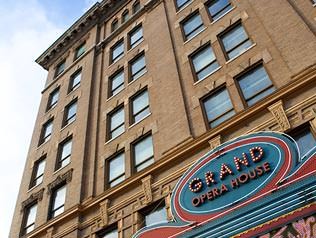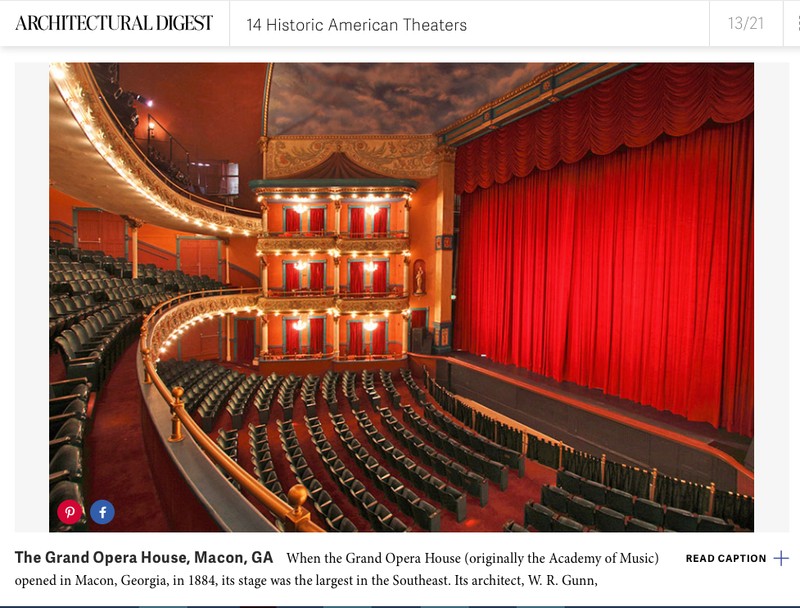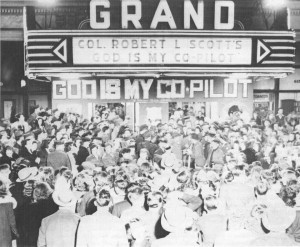Grand Opera House
Introduction
Text-to-speech Audio
Images
Facade of the Grand Opera House

Seating and stage at the Grand Opera House

Major movie premier at the Grand: God is My Co-Pilot

Backstory and Context
Text-to-speech Audio
History of the Grand Opera House
The Grand Opera House was designed by famed architect W.R. Gunn, who also designed the Hawkinsville Opera House as well as over 100 theaters throughout the United States. Gunn was famous for saying, “I am the only theatrical architect and practical builder in the U. S. of A. who will guarantee the line of sight and acoustics when the entire control of the auditorium and stage is under my supervision, and will forfeit $1,000 when my construction proves a failure in either case.”
Gunn designed the Grand Opera House in Macon, and by its completion in 1884, the theater was the largest in the southeast, capable of hosting 2,418 attendees and featuring a 58’ x 90’ stage. By 1902, the stockholders of the Academy of Music called for a renovation, and with the addition of a seven-story Grand Building, the theater re-opened as the Grand Opera House in 1905.
In those early years, the Grand Opera House was one of the leading theaters in the area, drawing major vaudeville, burlesque, and comedy and drama acts. One of the first major acts was the 1908 production of Ben-Hur, a production that used live horses and chariots as well as a treadmill on the stage. Other major events included Charlie Chaplin leading the Philip Sousa Band in 1918 to raise money for the war effort, a memorial service for President McKinley, and various shows with some of the leading performers of the time. Harry Houdini also performed at the Grand Opera House, leaving an important legacy behind (Houdini created several trap doors for his act, and some of these doors are still in use today).
From the mid-1930s to the 1960s, the Grand Opera House was a cinema, hosting one major movie premier in 1945. The last movie that the Grand Opera House displayed was the Sound of Music, in 1965. The theater fell into disuse and the building was scheduled for demolition so that it could become a parking lot. In 1967, supporters of the theater rallied and formed the Macon Arts Council. After raising funds to save, restore, and return operations to the Grand Opera House, the Macon Arts Council saved the theater and it was added to the National Register of Historic Places soon after.
